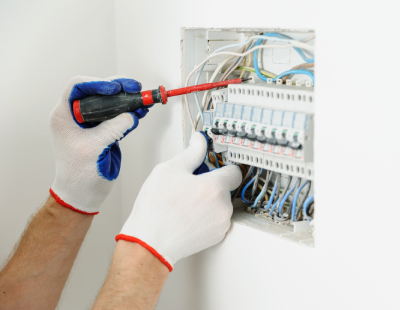New regulations on electrical safety standards for private rented accommodation have come into effect. Here is what landlords need to know.
The ‘Electrical Safety Standards in the Private Rented Sector (England) Regulations 2020’ is part of the Ministry of Housing, Communities and Local Government’s (MHCLG) drive to ensure all housing in the private rented sector is safe for tenure.
Landlords must ensure the electrical installations within their properties are safe and inspected by a qualified person at least every five years, and must ensure an Electrical Safety Condition Report (EICR) is produced following the inspection and provided within the designated timeframes.
These new regulations came into effect on 1st June 2020, and apply to new tenancies from 1st July this year and existing tenancies from 1st April 2021.
Who can carry out the inspection?
The regulations require the inspection to be completed by a ‘qualified and competent person’ at least every five years. It is the responsibility of the landlord to ensure the electrician selected is qualified, and that they are qualified to current Wiring Regulations – BS 7671.
A reliable way to ensure this is to choose someone who is a member of a competent person scheme, such as the National Association of Professional Inspectors and Testers (NAPIT) or National Inspection Council for Electrical Installation Contracting (NICEIC).
What will be inspected?
All ‘fixed’ electrical parts of the property must be inspected and tested, such as the wiring, the socket-outlets, light fittings, and any permanently connected electrical equipment such as showers and extractor fans. It does not cover other electrical appliances supplied as part of the tenancy (cookers, fridges and televisions) or any items owned by the tenant.
However, the government recommends that landlords undertake PAT tests on these to ensure safety.
Reporting
An Electrical Installation Condition Report (EICR) should be provided, detailing the findings of the inspection and the next due date for inspection.
For any areas of the installation that do not meet the standards set out in the current Wiring Regulations, the person inspecting the property will classify it with the following codes:
Code 1 (C1): Danger present. Risk of injury.
Code 2 (C2): Potentially dangerous.
Further Investigation (FI): Further investigation required without delay.
Code 3 (C3): Improvement recommended. Further remedial work is not required for the report to be deemed satisfactory.
What action must be taken?
If any part of the installation is classified as C1 or C2, remedial work must be carried out to remove the danger and risk of injury, and must be followed up in writing before the report is issued. Other remedial work and further investigation must be completed within 28 days, or sooner if indicated in the report. Once the work has been completed, landlords must supply the tenant and local authority with written confirmation from the electrician. This process must be repeated until the electrical installation is found to be compliant.
Once the installation is declared safe for continued use, landlords must supply a copy of this report to the tenant within 28 days of the inspection and to a new tenant before they move in.
With the new electrical safety standards in place, landlords are now entirely responsible for the safety of installations within the property. It is important that landlords spend time to understand the new regulations, as they contain obligations they will need to meet moving forward.
Dominick Sandford, is the head and director of merchandising and marketing at ElectricalDirect.
Reference: Dominic Sandford, 'New private rental electrical safety standards: What you need to know', https://www.landlordtoday.co.uk/breaking-news/2020/9/new-private-rental-electrical-safety-standards-what-you-need-to-know


No comments:
Post a Comment